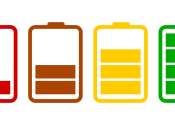Last update
Energy & Green Tech
Integer addition algorithm could reduce energy needs of AI by 95%
A team of engineers at AI inference technology company BitEnergy AI reports a method to reduce the energy needs of AI applications by 95%. The group has published a paper describing their new technique on the arXiv preprint ...
19 hours ago
1
27

New algorithm helps read QR codes on uneven surfaces
Sometimes, we try to capture a QR code with a good digital camera on a smartphone, but the reading eventually fails. This usually happens when the QR code itself is of poor image quality, or if it has been printed on surfaces ...
Oct 11, 2024
0
39

Telescopes can help bring renewable energy to isolated Chilean communities
Just published research in Nature Sustainability shows that building a renewable energy system for a telescope in Chile's isolated Atacama Desert could also cover 66% of a nearby community's energy needs, giving hope for ...
Oct 11, 2024
0
22

Tesla's Cybercab: Elon Musk unveils robotaxi, pledges it 'before 2027'
Elon Musk on Thursday unveiled what he said was a robotaxi capable of self-driving, predicting it would be available by 2027—about a decade after he first promised an autonomous vehicle.
Oct 11, 2024
0
38
Engineering
A quick and easy way to produce anode materials for sodium-ion batteries using microwaves
A research team has developed a process technology that enables ultrafast, 30-second preparation of hard carbon anodes for sodium-ion batteries using microwave induction heating.
Oct 11, 2024
0
52
Robotics
New data augmentation algorithm could facilitate the transfer of skills across robots
In recent years, roboticists have developed a wide range of systems designed to tackle various real-world tasks, ranging from completing household chores to delivering packages or finding target objects in delineated environments.
Oct 10, 2024
0
24
Consumer & Gadgets

Apple unveils Depth Pro, an AI app that can map the depth of a 2D image
A team of engineers at Apple has developed an AI-based model called Depth Pro that can map the depth of a 2D image. The team has written a paper describing the app and its capabilities and has posted it on the arXiv preprint ...
Engineering

Dragonfly wing pattern reinforces vaults and domes better than ancient Roman and tech-generated methods
Skoltech researchers and their colleagues from the University of Granada, Spain, have determined the most efficient ways to reinforce vaults and domes in architecture. The team compared how well various traditional and unconventional ...
Oct 10, 2024
1
51
Energy & Green Tech

Scientists improve catalytic converter efficiency to cut harmful pollution from hydrogen engines
Hydrogen-burning internal combustion engines offer great promise in the fight against climate change because they are powerful without emitting any earth-warming carbon. They can power heavy-duty trucks and buses and are ...
Oct 10, 2024
0
80
Computer Sciences

AI-powered software narrates surroundings for visually impaired in real time
A world of color and texture could soon become more accessible to people who are blind or have low vision, via new software that narrates what a camera records.
Oct 10, 2024
0
19
Energy & Green Tech

Streamlining solar cell structure and fabrication for more affordable energy
A new fabrication technique for substantially enhancing the prospects of commercializing perovskite solar cells through improved stability, reliability, efficiency and affordability is underway at City University of Hong ...
Oct 10, 2024
0
16
Engineering

By mimicking ironing, researchers perfect 3D printing control over color, texture, and shade
Multimaterial 3D printing enables makers to fabricate customized devices with multiple colors and varied textures. But the process can be time-consuming and wasteful because existing 3D printers must switch between multiple ...
Oct 10, 2024
0
27
Energy & Green Tech

New technology converts wastewater to sustainable aviation fuel with potential 70% reduction in emissions
Made from renewable materials like biomass and agricultural waste, sustainable aviation fuel has enormous potential to decarbonize the aviation industry. But widespread adoption has yet to take off.
Oct 10, 2024
0
56
Engineering

Hypersaline brine produced by fracking has left us in a pickle, but new process could help dry it up
Seemingly miraculous innovations have made it possible to slake the ever-growing thirsts of our industrial society. Need more energy? Frack it from deep-bedded rocks. Fresh water? Desalinate ocean flows. Precious metals? ...
Oct 10, 2024
0
14
Engineering

Researchers achieve world-record resolution in turbulence simulations
From the water that comes out of the faucet to the chemical reactions in jet engines that propel planes, turbulence affects our everyday lives. Researchers at Georgia Tech are studying the complex physics of turbulence in ...
Oct 10, 2024
0
57
Electronics & Semiconductors

Organic compound boosts solar cell stretchability without sacrificing power
A solar cell developed by RIKEN physicists can be stretched without greatly affecting its ability to convert light into electricity. It is thus promising for powering the next generation of wearable electronics.
Oct 10, 2024
0
36







































